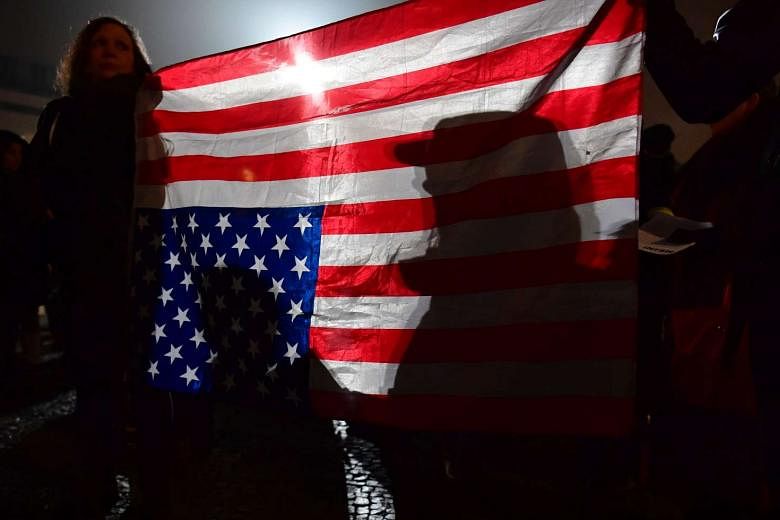NEW YORK (BLOOMBERG) - Surveys of businesses and consumers have shown a surge in confidence since the Nov 8 US presidential election, as hopes for growth-lifting fiscal stimulus and deregulation have increased. But actual economic activity has yet to catch up.
Survey measures of confidence have bested economists' forecasts over the past month by the most since March 2011, according to data compiled by Bloomberg. Official government statistics on economic activity, especially in housing, retail sales, and factory production, haven't yet shown the same upside surprises. If anything, those data releases have been slightly disappointing on net recently.
That may catch the attention of the Federal Reserve officials watching for evidence that hope translates into stronger economic activity as they weigh the timing of the next rise in interest rates.
The difference between the two - "soft" and "hard" data surprises - has only been wider once before in 17 years of data, in February 2011.
There are already signs that some of the hard data are beginning to turn higher. Advance estimates of fourth-quarter gross domestic product released on Friday by the Commerce Department showed US business investment rose on a year-over-year basis for the first time in four quarters, as the effects of the oil-price crash continued to fade. Growth in residential investment, on the other hand, was slowest in more than five years.
While greater expectations should in theory translate to greater activity, mixed signals from the data and uncertainty surrounding the exact contours of the new administration's economic policies helps explain why Fed officials continue to strike a cautious tone toward the timing of the next rate hike. The central bank is expected to leave rates unchanged after its two-day meeting that ends on Wednesday.
"I am a big advocate of thinking in terms of what the expectations are, and I would say if the US comes to be viewed as a great place to invest and a great place to make money, then you will see a lot of investment in the US, and that will feed into growth rates, and that will validate the policies, and you will get a virtuous cycle," St Louis Fed President James Bullard told reporters after a Jan 12 speech in New York. "That is very possible, but a lot depends on the details of the policies that might be introduced."

